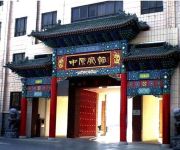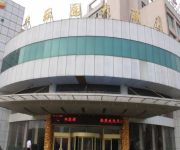Facts and Data
Webpages:
Official Unesco Page
Basis Data:
Unesco World heritage since: 2006
Size of heritage: 414 ha
- Buffer zone: 720 ha
Coordinates:
Longitude: 114,314°
Latitude: 36,127°
Summary
The archaeological site of Yin Xu, close to Anyang City, some 500 km south of Beijing, is an ancient capital city of the late Shang Dynasty (1300 - 1046 BC). It testifies to the golden age of early Chinese culture, crafts and sciences, a time of great prosperity of the Chinese Bronze Age. A number of royal tombs and palaces, prototypes of later Chinese architecture, have been unearthed on the site, including the Palace and Royal Ancestral Shrines Area, with more than 80 house foundations, and the only tomb of a member of the royal family of the Shang Dynasty to have remained intact, the Tomb of Fu Hao. The large number and superb craftsmanship of the burial accessories found there bear testimony to the advanced level of Shang crafts industry. Inscriptions on oracle bones found in Yin Xu bear invaluable testimony to the development of one of the world’s oldest writing systems, ancient beliefs and social systems.
Location on Map
Show bigger map on Openstreetmap
Yin Xu: A Glimpse into Ancient China
Yin Xu, located in the Henan Province of China, is a UNESCO World Heritage site that offers a fascinating glimpse into the rich history and culture of ancient China. This archaeological site, also known as the Yin Ruins, is renowned for its historical significance and the wealth of artifacts it has yielded.
History
The history of Yin Xu dates back over 3,000 years to the late Shang Dynasty (c. 1300-1046 BCE). It served as the capital of the Shang Dynasty, one of the earliest recorded dynasties in Chinese history. The site was discovered in 1899 by the renowned archaeologist Wang Yirong, who unearthed oracle bones with ancient inscriptions, providing valuable insights into the Shang Dynasty's political, social, and religious practices.
Yin Xu was a thriving city during its heyday, covering an area of approximately 300 hectares. It was a center of political power, where the Shang kings ruled over their vast empire. The city was fortified with massive walls and had a sophisticated urban layout, featuring palaces, temples, workshops, and residential areas.
One of the most significant discoveries at Yin Xu is the Tomb of Fu Hao, a powerful queen and military leader of the Shang Dynasty. Excavated in 1976, her tomb contained a treasure trove of precious artifacts, including bronze vessels, jade ornaments, and ceremonial weapons. These artifacts provide invaluable insights into the artistic and technological achievements of the Shang Dynasty.
Current State
Today, Yin Xu stands as a testament to the ancient civilization that once thrived there. The site has been meticulously preserved and is open to the public, allowing visitors to explore the remnants of this ancient capital.
Upon entering Yin Xu, visitors are greeted by the imposing sight of the Palace Area, which was the political and ceremonial center of the city. The reconstructed palace buildings give visitors a sense of the grandeur and opulence that once characterized this ancient capital.
The site also features the Royal Cemetery, where the tombs of Shang kings and queens are located. These tombs, though not fully excavated, offer a glimpse into the burial practices and beliefs of the Shang Dynasty.
One of the highlights of a visit to Yin Xu is the Museum of the Yin Ruins, which houses a vast collection of artifacts unearthed from the site. The museum showcases bronze vessels, jade carvings, oracle bones, and other precious objects, providing visitors with a deeper understanding of the Shang Dynasty's culture and achievements.
Yin Xu's UNESCO World Heritage status has helped raise awareness of its historical significance and attract visitors from around the world. The site's preservation efforts ensure that future generations can continue to learn from and appreciate the ancient wonders of Yin Xu.
In conclusion, Yin Xu is a remarkable UNESCO World Heritage site that offers a captivating journey into the ancient history of China. Its rich archaeological remains and precious artifacts provide a window into the political, social, and cultural aspects of the Shang Dynasty. A visit to Yin Xu is a must for anyone seeking to delve into the fascinating world of ancient China.
Hotels and places to stay
Anyang Zhongyuan Hotel
Anyang
Home Inn Anyang Train Station
ibis Anyang Jiefang Ave
SUPER 8 ANYANG HONG QI ROAD
Fengleyuan Hotel
Jin Jiang Inn Anyang Wenfeng Avenue
Anyang One plus one Express Hotel
Anyang Xindadi Hotel
GreenTree Inn AnYang ShuGuang Road Shuguang New Community Business Hotel
Videos from the area
Videos provided by Youtube are under the copyright of their owners.












